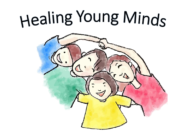We all have unpleasant or worrying thoughts at times and we have all occasionally wondered “have I unplugged the iron”, “have I locked the car” etc. However, it is only when these thoughts start to interfere with your child’s day to day life that you should be concerned about OCD.
What is OCD?
Obsessive Compulsive Disorder (OCD) is a common condition, characterised by obsessive thoughts and/or compulsive behaviours. Obsessive thoughts are intrusive, meaning that they are unwanted and seem to force themselves into your child’s head. They are ego-dystonic, meaning that they are experienced as distressing or uncomfortable and cause a lot of anxiety. They are also recognised as irrational but nevertheless intense and persistent. Some common obsessions include fear about germs or contamination, religious obsessions, unwanted aggressive or sexual thoughts and discomfort if things are not symmetrical or even. Compulsions are repetitive/ritualistic behaviours which are carried out in order to reduce the anxiety or discomfort caused by obsessions. Common compulsions may include checking, ordering, cleaning, hoarding, counting and re-doing things. Younger children may struggle to describe obsessions and may express a general fear of something bad happening or things not being right. The obsessions and compulsions associated with OCD cause distress and frequently affect the child or young person’s mood and general mental state. They may lead to the child avoiding certain places or certain tasks as they recognise these as triggers which can make their obsessions worse. OCD can interfere with a child’s ability to complete schoolwork and homework or even to attend school. It can also interfere with the child’s routine, their ability to get ready on time, their eating habits and their sleep pattern.
OCD usually starts in early adolescence but often goes undiagnosed until adulthood. As many as 1-3% of children and young people aged 5 to 15 years old will suffer from OCD. OCD is equally common in males and females, and across cultures and ethnicities.
The Impact of OCD
OCD can have a significant impact on both the child or young person experiencing it and their families. Young people may spend a significant amount of time carrying out compulsive behaviours or rituals and this may result in exhaustion. Young people may struggle to speak to others about OCD because of shame, fears that they may be going mad or that speaking about the obsessions will make them real. This can lead young people to withdraw and become socially isolated and experience low mood and low self-esteem.
OCD may affect the whole family’s ability to carry on with day to day life as normal. Leaving the house to go out as a family may become challenging due to the length of time it takes the young person to get ready and/or due to the young person’s avoidant behaviours.
OCD also impacts on school attendance and academic and social functioning in young people with OCD. Young people may find it difficult to get to school on time or might be late handing in work, ask questions excessively and write and re-write their work in classes. They may also become a target for bullying by peers because of their compulsive or ritualistic behaviours. Their friendships may also be affected as they become more withdrawn and less inclined to go out. Both falling behind on school work and being a victim of bullying may have a significant negative impact on their self-esteem and their mood.
Common additional difficulties or co-existing conditions
As described above OCD may have a negative impact on the child or young person’s self-esteem and mood and may lead to Depression.
Tic disorders, such as Tourette’s Syndrome, and Autism Spectrum Disorder may be underlying conditions in a young person with OCD.
Assessment and Diagnosis
OCD can be diagnosed following a mental health assessment by a trained professional such as a Child and Adolescent Psychiatrist. This will include an interview with the child/young person and with the parents/carers. It may also include the use of rating scales such as the Children’s Yale-Brown Obsessive Compulsive Scale. This can help assess for the presence of specific symptoms and symptom severity.
Treatment
Research shows that Cognitive Behavioural Therapy (CBT) with Exposure and Response Prevention (ERP) is the most effective treatment for OCD. Exposure involves facing the fear and Response Prevention involves resisting the urge to perform a compulsion.
In addition to CBT with ERP, there is also good evidence that medication can form a helpful part of the treatment plan for OCD. Most typically, medication would only be offered if the benefits of psychological therapy alone have been limited or if the child or young person is unable to engage in therapy because of the severity of their symptoms. Medication is usually considered if the impact of OCD on the child or young person’s day to day functioning is severe. The medications used most commonly are Selective Serotonin Re-uptake Inhibitors (SSRIs). The need for medication must be assessed by a specialist and the medication is prescribed by a specialist such as a child and adolescent psychiatrist and introduced carefully and slowly and built-up to a therapeutic dose over several weeks. It is important to note that it can take a few weeks for the positive effects of SSRI medications for OCD to become apparent.
Management of the condition also involves education for the child and family about what it means to have OCD and this may help reduce feelings of guilt and shame that the child or young person may be experiencing. Support in school is also important to help the child access education while they are being treated.
If you need to know more or schedule an assessment, please contact us and book an appointment.

